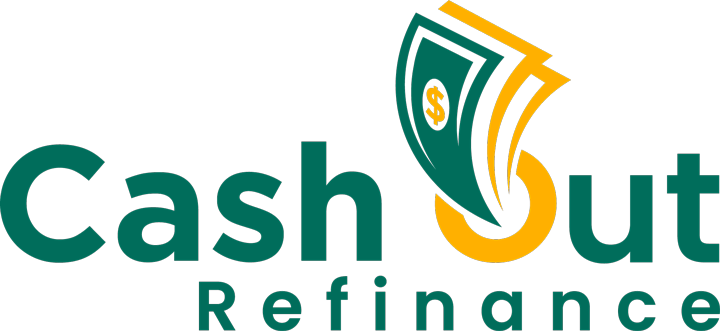Everything You Need to Know about Conventional Loan Refinance and Cash-Out Refinance
Refinancing a conventional mortgage can be a strategic move to lower your interest rate, reduce monthly payments, adjust loan terms, or access home equity. Two common options for homeowners with conventional loans are Rate-and-Term Refinance and Cash-Out Refinance.
If you’re considering refinancing your conventional loan, this guide will walk you through:
✅ What is a Conventional Loan Refinance?
✅ What is a Cash-Out Refinance?
✅ Eligibility Requirements for Conventional Refinancing
✅ How to Qualify for a Conventional Cash-Out Refinance
✅ Benefits and Risks of Refinancing
✅ Step-by-Step Refinance Process
✅ Frequently Asked Questions (FAQs)
By the end of this guide, you’ll be equipped with all the knowledge you need to make an informed decision about refinancing your conventional mortgage.
What is a Conventional Loan Refinance?
A conventional loan refinance is when a homeowner replaces their current mortgage with a new one, usually to secure better terms, lower interest rates, or shorten the loan term. It does not involve taking additional cash from home equity.
Types of Conventional Refinancing
🏡 Rate-and-Term Refinance – This type of refinance allows you to:
✔ Lower your interest rate for a reduced monthly payment.
✔ Change your loan term (e.g., from 30 years to 15 years).
✔ Switch from an adjustable-rate mortgage (ARM) to a fixed-rate mortgage.
💰 Cash-Out Refinance – This option allows homeowners to:
✔ Tap into home equity and borrow more than they currently owe.
✔ Receive the difference as a lump sum cash payment.
✔ Use the funds for home improvements, debt consolidation, or other expenses.
What is a Conventional Cash-Out Refinance?
A Cash-Out Refinance replaces your existing mortgage with a new, larger loan, and the difference between the two loans is given to you in cash.
Example of a Cash-Out Refinance in Action:
- Home Value: $400,000
- Current Mortgage Balance: $200,000
- New Loan Amount: $300,000 (75% Loan-to-Value)
- Cash Received: $100,000 (minus closing costs)
This $100,000 cash payout can be used for renovations, debt consolidation, tuition, investments, or other major expenses.
Eligibility Requirements for Conventional Refinancing
To refinance a conventional mortgage, lenders evaluate several factors:
1. Credit Score Requirements
✔ Minimum credit score for Rate-and-Term Refinance: 620+
✔ Minimum credit score for Cash-Out Refinance: 640+ (higher scores get better rates)
💡 If your credit score is low, visit MiddleCreditScore.com for tips on improving it before applying.
2. Loan-to-Value (LTV) Ratio
✔ Rate-and-Term Refinance: Typically, up to 97% LTV is allowed.
✔ Cash-Out Refinance: Most lenders allow up to 80% LTV.
💡 Example: If your home is worth $300,000, a lender may let you borrow up to $240,000 (80% LTV) with a cash-out refinance.
3. Debt-to-Income (DTI) Ratio
✔ Most lenders require a DTI of 43% or lower.
✔ Some lenders allow up to 50% DTI with strong compensating factors.
4. Employment & Income Verification
✔ Must show at least two years of stable employment and income.
✔ Acceptable income sources: salary, bonuses, self-employment, investments, rental income.
How to Qualify for a Conventional Cash-Out Refinance
If you’re looking to cash out equity, you must meet additional requirements:
1️⃣ Own the home for at least 6 months before refinancing.
2️⃣ Have at least 20% equity in your home.
3️⃣ Demonstrate ability to repay with strong credit and stable income.
4️⃣ No recent bankruptcies or major delinquencies on your credit report.
🔎 Need help finding a lender? Get connected with top lenders on Browse Lenders®.
Benefits and Risks of Refinancing
✅ Benefits of Conventional Refinancing
✔ Lower Interest Rate – Potentially save thousands over the life of the loan.
✔ Reduced Monthly Payments – Free up more cash for other expenses.
✔ Shorter Loan Term – Pay off your home faster and save on interest.
✔ Fixed-Rate Stability – Switch from an ARM to a predictable fixed-rate loan.
✔ Access Home Equity – Use cash from your home for home improvements, investments, or emergencies.
❌ Potential Risks of Refinancing
❌ Closing Costs – Expect to pay 2%-6% of the loan amount in fees.
❌ Longer Loan Term – If you extend your mortgage term, you may pay more interest overall.
❌ Risk of Foreclosure – Borrowing more than you can afford to repay puts your home at risk.
Step-by-Step Refinance Process
📌 Step 1: Assess Your Financial Goals
- Do you want a lower payment, better rate, or cash out equity?
- Check your credit score, home equity, and current mortgage terms.
📌 Step 2: Compare Lenders and Get Pre-Approved
- Work with a lender on Browse Lenders® to compare offers.
- Review interest rates, closing costs, and loan terms.
📌 Step 3: Submit Your Loan Application
- Provide financial documents:
✔ Pay stubs
✔ Tax returns
✔ Bank statements
✔ Debt and asset information
📌 Step 4: Home Appraisal & Loan Underwriting
- The lender will order an appraisal to determine your home’s value.
- The underwriter reviews your financials to approve the loan.
📌 Step 5: Close the Loan
- Sign the final paperwork and pay any closing costs.
- Receive funds (for cash-out refinance) in as little as 3-5 days after closing.
Frequently Asked Questions (FAQs)
1. How much cash can I take out with a refinance?
✔ Most lenders allow you to cash out up to 80% of your home’s value.
2. How long does a conventional refinance take?
✔ Typically, 30-45 days from application to closing.
3. Can I refinance with bad credit?
✔ Yes, but you may need a higher interest rate or compensating factors like strong income. Check your credit at MiddleCreditScore.com.
4. Are there closing costs with a refinance?
✔ Yes, closing costs range from 2%–6% of the loan amount. Some lenders allow you to roll costs into the loan.
5. When is the best time to refinance?
✔ When interest rates are lower than your current rate or when you need access to equity for major expenses.
Final Thoughts: Is Refinancing Right for You?
A conventional loan refinance or cash-out refinance can help homeowners lower their payments, access equity, or adjust loan terms to meet financial goals.
🔎 Ready to explore refinancing options? Connect with top lenders at Browse Lenders® to get personalized loan offers today! 🚀


